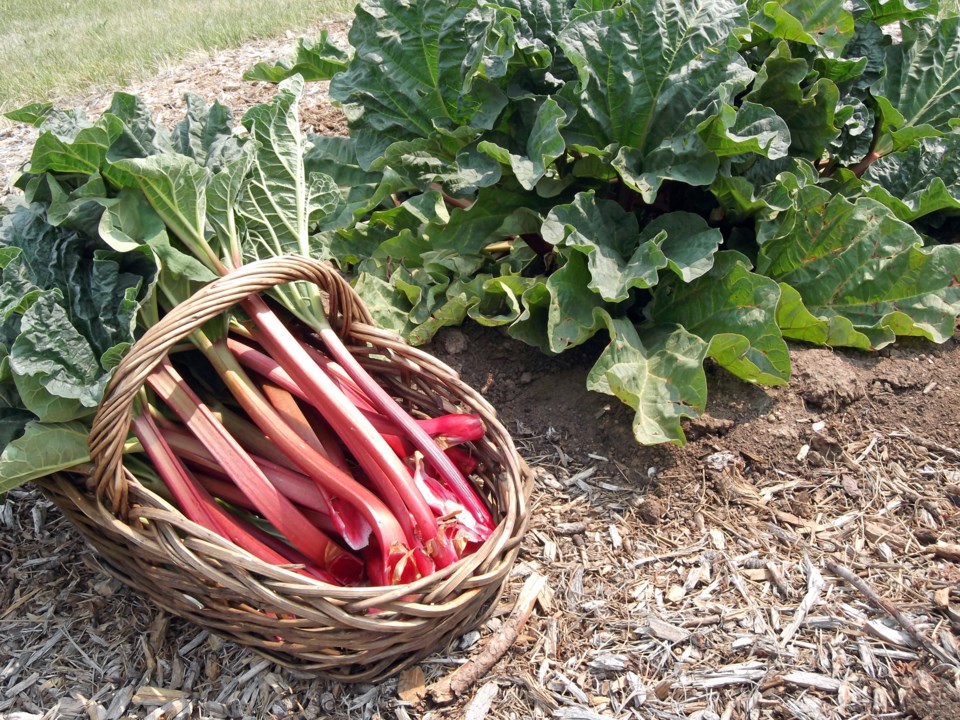Not many plants are pest-free, give us great desserts before winter’s end and grow large and fast with almost no care.
The exception is rhubarb, sometimes called the pie plant.
But rhubarb stalks make a lot more than pies. They’re also used for jams, tarts, puddings, wines, pies, preserves and stewed and baked dishes.
Rhubarb is said to have originated in Siberia where it was mainly used by healers in days long past. But, it appears that no one then considered eating it.
Rhubarb leaves and roots are very poisonous due to a high concentration of oxalic acid. The stalk is the only part of the plant that’s edible.
American pioneers loved the stalk because it’s prairie-hardy, shades out weeds, resists slugs and virtually all other pests and diseases. The stalks can be cut until early June though there’s divided opinion among gardeners how long to continue. The stalks gradually get tougher and more acidic as the summer gets drier.
This is the time of year rhubarb plants begin appearing in garden centres and gardeners without the plant start considering whether to make room for it.
Because this plant loves rich living, one of its favourite spots is an old compost heap or an old manure pile.
In those two places, it’s quite possible to dig the large-size holes some gardeners suggest sizable rhubarb roots need. A 45-cm-deep hole seems to work reasonably at first, but as the plant grows it enlarges and, after a few years, moving it will take time and muscle.
In most other locations, rhubarb does well if you give it a mulching with manure or compost when harvesting is over. Rhubarb also likes to be watered often.
If that’s not possible, it helps if you can mulch with grass clippings through summer.
Generally rhubarb adapts very well to partial shade. In full shade the stems tend to be thinner but still tasty and edible. Grown in full sun, the stems emerge early in spring but die down early unless you keep up with watering.
There’s an art to harvesting rhubarb — pull straight up and twist to one side while keeping the stalk straight. Not everyone gets it right the first time, but any little pieces of stalk wasted should be removed because they can trigger rot in the crown.
As these plants age, they sometimes throw up a giant spectacular head bearing hundreds of tiny white flowers followed by tiny, flat lily-like seeds. These stalks can grow to up to two metres tall. I brought a stalk inside once and spent the next week sweeping up flower bits.
Most rhubarb sold in Canada has red, very tender stems and a mild flavour. Some of the most popular varieties include, Canada Red, German Wine and Honey Red. One old-fashioned type is Victoria, which has very large, greenish-red stems and is more acidic than most of the redder varieties. The Victoria is the one often passed over backyard fences from neighbours or relatives.
It is possible for adventurous gardeners to grow rhubarb from seed and one source is Chiltern in England.
One type, Glaskin’s Perpetual, is said to be cuttable the first year from seed.
Anne Marrison is happy to answer garden questions. Send them to her via [email protected] It helps if what city or region you reside in.



